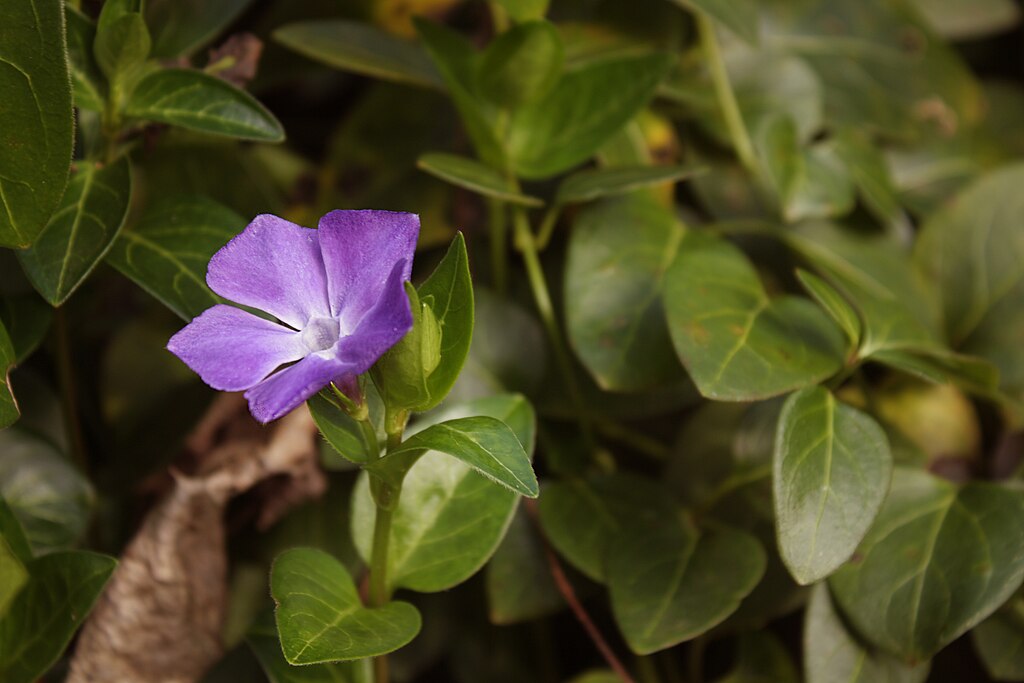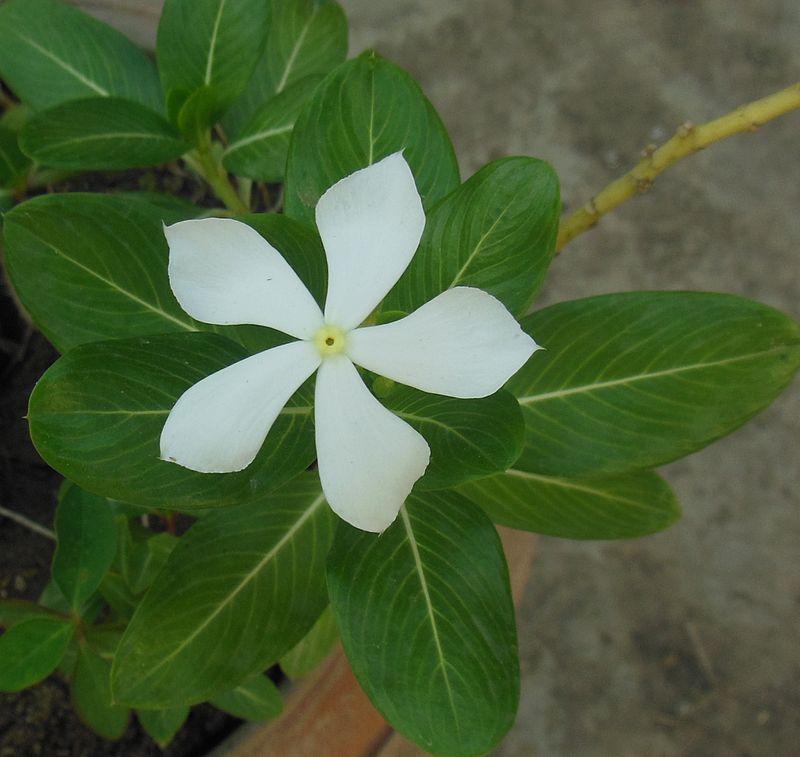 |
| Vinca |
 |
| Seeds of Vinca |
 |
| White rosy periwinkle |
Synonyms:
- Vinca rosea, Catharanthus, Madagascar periwinkle.
- Periwinkle,
- Sadaphuli(सदाफूली), Sadabahar(सदाबहार) - Hindi
Biological Source:
Vinca is the dried entire plant of Catharanthus roseus Linn.
Family - Apocynaceae.
Geographical Source:
Vinca is a native of Madagascar and is found in many tropical and subtropical countries especially in India, Austra-lia, South Africa and North and South America. The plant is cultivated as garden plant in Europe and India.Morphology/Macroscopics Characters:
Colour: Leaves are green in colour, flowers are either violet, pinkish white or carmine red and roots are pale grey.
Odour: Characteristic
Taste: Bitter
The flowers are hermaphrodite (have both male and female organs) and are pollinated by bees.
Leaves are petiolate, entire margin, ovate or oblong, glossy appearance and with acute apex.
Fruit is follicles with numerous black seeds.
Microscopy:
Vinca has dorsiventral leaf structure. Epidermis is a single layer of rectangular cells covered with thick cuticle. It consists of uni-cellular covering trichome and cruciferous stomata. In the mesophyll region single layer of elongated and closely packed palisade parenchyma cells are present just below the upper epidermis. In the midrib region two to three layers of collenchyma is present, both below the upper epidermis and above the lower epidermis. Vascular bundle consisting of xylem and phloem is present in the middle of midrib region and rest of the intercellular space is covered by five to eight layers of spongy parenchyma. Calcium oxalate crystals are absent.
 |
| T.S. of Vinca Leaf |
Chemical Constituents:
Alkaloids are present in entire shrub but leaves and roots contain more alkaloids. About 90 alkaloids have been isolated from Vinca from which some like Ajmalicine, Serpentine and Tetrahydroalstonine are known and are present in other species of Apocynaceae. The important alkaloids in Catharanthus are the dimer indole indoline alkaloids Vinblastine and Vincristine and they possess defi-nite anticancer activity. Vindoline and Catharanthine are indole monomeric alkaloids. It also contains monoterpenes, sesquiterpene, indole and indoline glycoside.
Uses:
- Vinblastin is an antitumour alkaloid used in the treatment of Hodgkin’s disease. Vincristine is a cytotoxic compound and used to treat leukaemia in children.
- Vinca is used in herbal practice for its astringent and tonic properties in menorrhagia and in haemorrhages generally. In cases of scurvy and for relaxed sore throat and inflamed tonsils, it may also be used as a gargle.
- For bleeding piles, it may be applied externally, as well as taken internally. It is also used in the treatment of diabetes.
- The flowers of the Periwinkle are gently purgative, but lose their effect on drying. If gathered in the spring and made into a syrup, they impart all their virtues, and this, it is stated, is excellent as a gentle laxative for children and also for overcoming chronic constipation in grown persons.



No comments:
Post a Comment